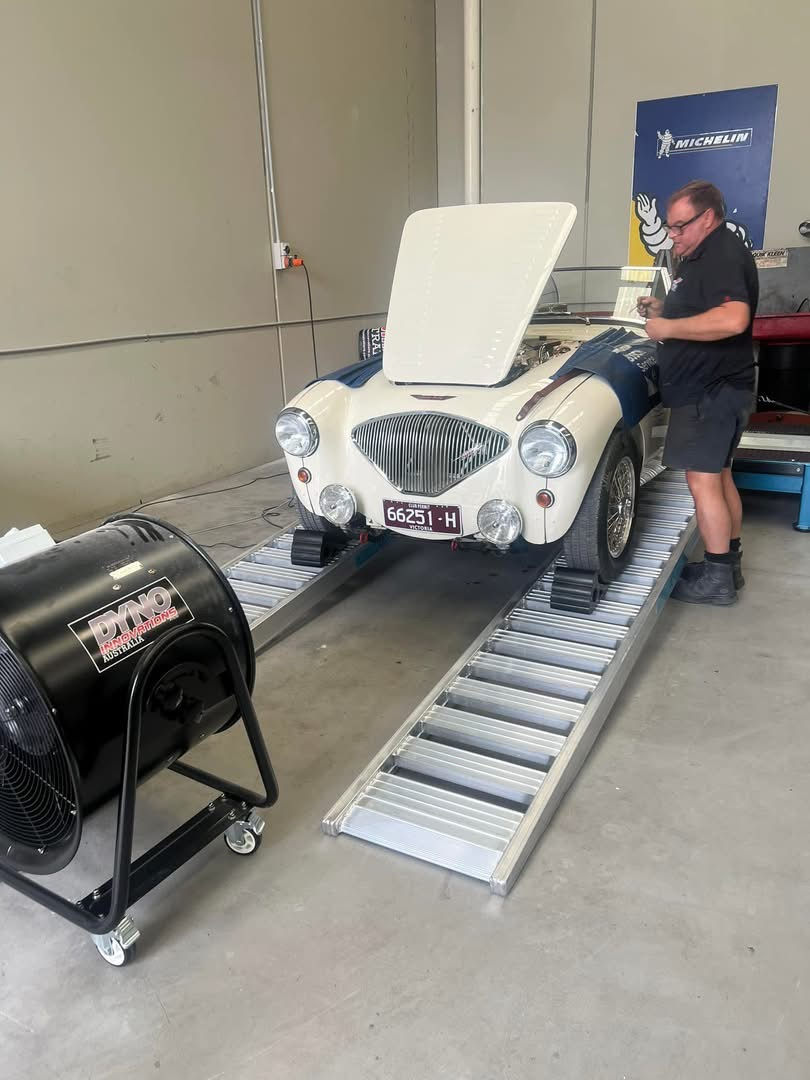Unlocking Performance Secrets: An In-Depth Look at Chassis Dyno Tuning for Cars
- Chris Watt

- Jun 4
- 3 min read
Chassis dyno tuning is essential for car enthusiasts and performance engineers who want to fine-tune their vehicles for maximum power and efficiency. This process simulates real-world driving conditions, enabling precise adjustments based on actual performance data. Whether you're a seasoned tuner or new to the car performance scene, understanding chassis dyno tuning is key to unlocking your vehicle’s potential.
What is a Chassis Dyno?
A chassis dynamometer, commonly known as a chassis dyno, measures a vehicle’s engine power at the wheels. Unlike an engine dynamometer, which tests an engine in isolation, a chassis dyno evaluates the entire vehicle, accounting for losses from the drivetrain, tires, and other components that can affect performance.
The dyno consists of rollers that the vehicle's wheels rest on. As the car accelerates, these rollers turn, and sensors measure the output at the wheels. For instance, a well-calibrated dyno can help to quantify how modifications like a new exhaust or an engine remap impact horsepower and torque. Notably, tuning on a chassis dyno can help users identify power gains of up to 20% over baseline configurations.
Why Use a Chassis Dyno?
Chassis dynos offer a range of advantages for performance tuning, including:
Realistic Testing: Chassis dynos simulate actual driving scenarios, providing a more accurate reflection of performance compared to traditional engine dynos.
Performance Mapping: Tuners create detailed performance maps that fine-tune the engine management system, which can result in power increases of 15% to 30%.
Validation of Upgrades: A chassis dyno quantifies power gains after modifications such as turbo kits or high-performance exhaust systems. One example is a turbo upgrade that can increase power from 250 to 350 horsepower, all verifiable on the dyno.
Diagnosis: If a vehicle is performing poorly, tuning on a chassis dyno can reveal problems that might not show during normal driving.
The Tuning Process
Preparing the Vehicle
Preparation is crucial before tuning begins. This involves:
Ensuring the vehicle is in optimal mechanical condition.
Checking fluid levels for oil, coolant, and fuel.
Verifying tire pressure to guarantee accurate measurements.
Initial Runs
Once the vehicle is ready, initial runs establish a baseline performance measurement. This process includes:
Securing the vehicle on the dyno to prevent movement.
Running the car through various RPMs to capture data accurately.
Monitoring critical parameters like air-fuel ratio and ignition timing while measuring horsepower and torque outputs.
Adjustments and Fine-Tuning
With a baseline established, tuning can begin. Adjustments may involve:
Refining fuel maps to achieve the ideal air-fuel mixture.
Modifying ignition timing to enhance performance.
Adjusting boost levels in turbocharged vehicles to optimally balance power and safety.
Multiple runs are typically conducted during this phase, allowing the tuner to observe changes and make necessary adjustments for peak performance.

Data Analysis
After several runs, data is analyzed to:
Compare power and torque curves from each run.
Identify potential problems that arose during tuning, such as unusual drop-offs in power.
Make additional refinements to push performance as close to optimum as possible.
Common Misconceptions
Despite the significance of chassis dyno tuning, some misconceptions persist:
More Power Equals Better Performance: Maximizing horsepower does not guarantee better overall performance. Factors like drivability, traction, and torque delivery significantly contribute to how a car feels and performs on the road.
Chassis Dynos Are Inaccurate: It's a common misconception that chassis dynos deliver unreliable results. While some variation may occur under different conditions, properly calibrated dynos provide consistent data, especially effective for comparing performance before and after modifications.
Tuning is a One-Time Process: Continuous tuning is necessary as other components change or the fuel type varies. Regular dyno sessions can help maintain peak performance over time.
Benefits of Chassis Dyno Tuning
The advantages of chassis dyno tuning go well beyond just boosting power. Some key benefits include:
Enhanced Fuel Efficiency: Proper tuning can lead to fuel savings of up to 10% by optimizing air-fuel mixtures and ignition timing.
Increased Reliability: A well-tuned vehicle runs smoother with less internal stress, extending its lifespan and reliability.
Customized Performance: Whether your goal is faster acceleration, better throttle response, or overall drivability, a chassis dyno provides the data needed to enhance performance tailored to your specific desires.
Final Thoughts
Chassis dyno tuning is a powerful tool for car enthusiasts who want to improve their vehicle's performance. By understanding how your vehicle operates under real-world conditions, you can make smart tuning decisions that enhance power, efficiency, and reliability.
Whether you race on weekends or seek everyday drivability, chassis dyno tuning unlocks numerous possibilities to elevate your driving experience. Although impressive power numbers on the dyno are exciting, the true aim is to create a balanced vehicle that performs exceptionally well across its entire operational range.




Comments